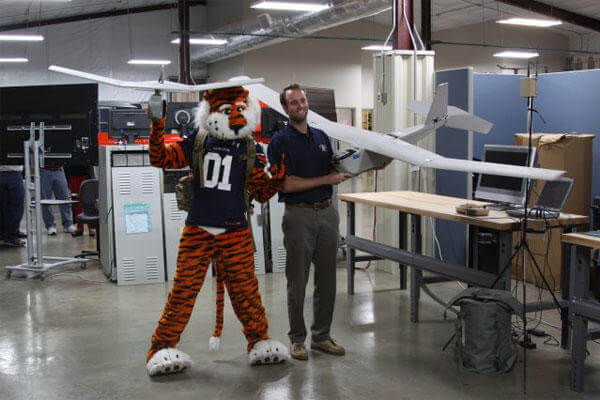REDSTONE ARSENAL, Ala. -- College students conducting research into remotely piloted unmanned aerial systems are testing their ideas on actual Army hardware.
In 2012, four Raven-A small unmanned aircraft systems were transferred to Middle Tennessee State, Mississippi State, Alabama A&M and Auburn University.
This unique opportunity is the result of partnerships between the Program Manager of Unmanned Aerial Systems; the Aviation and Missile Research, Development and Engineering Center; and the four universities.
Under Educational Partnership Agreements, each university was provided with a RQ-11A aircraft, ground control station and tough book computer.
According to AMRDEC chief of aerodynamic technology, Lamar Auman, the Center anticipates the partnerships and hardware transfers will lead to future research collaboration and opportunities to speed transition of innovative technologies from academia to the field. Auman sees the potential for students to develop new payloads and new sensors to fit into existing and future systems.
In addition to promoting science, technology, engineering and mathematics education, these efforts could lead to new or expanded lower-cost capabilities for all UAS platforms.
Odeal Richardson, technical chief for External Programs for PM UAS, said the memorandums with the program manager and the EPAs with AMRDEC are important steps to take today to develop engineers and technology for tomorrow.
"We are in the process of identifying gaps that the universities that they can pursue on their own," Richardson said.
Additional partnerships with other universities are being discussed.
The Raven-A is a great choice for loaning to universities because it's small, man-portable, and requires two people to operate, Auman said. "It's a small portable platform that has a lot of capability for its size. It is also the size and class of remotely piloted aircraft that many schools across the nation have been using as teaching aids in their curricula.
Many colleges and universities compete in programs like AIAA's Design, Build, Fly and AUVSI student competitions. Our obsolete RQ-11A systems will serve as 'ambassadors' to the colleges and will challenge the students to design to the harsh and rugged demands that are placed on these systems."
At the end of the five-year EPA, the university will return the hardware to the Army.
"Our goal is to have new low-cost technology ideas coming back to AMRDEC for future systems. We are taking small steps in that direction and we've got a long way to go before we will realize that goal," Auman said. "While it's not called out in the EPA, it is my personal hope that the schools will use the Raven hardware to develop a form, fit, function, and communication solutions for a host of sensors applications."
"When someone comes to AMRDEC with a new UAS sensor payload, I believe we should be positioned to partner with them to assist with payload integration and flight tests performance evaluation," Richardson said. "We could develop special sensors to look for a host of things, so that when the next natural disaster occurs we could send in support teams to search for stranded survivors, hazardous leaks from industrial sites, or a variety of other things. I believe that would be a great product that AMRDEC could provide to PM UAS and the nation."



























